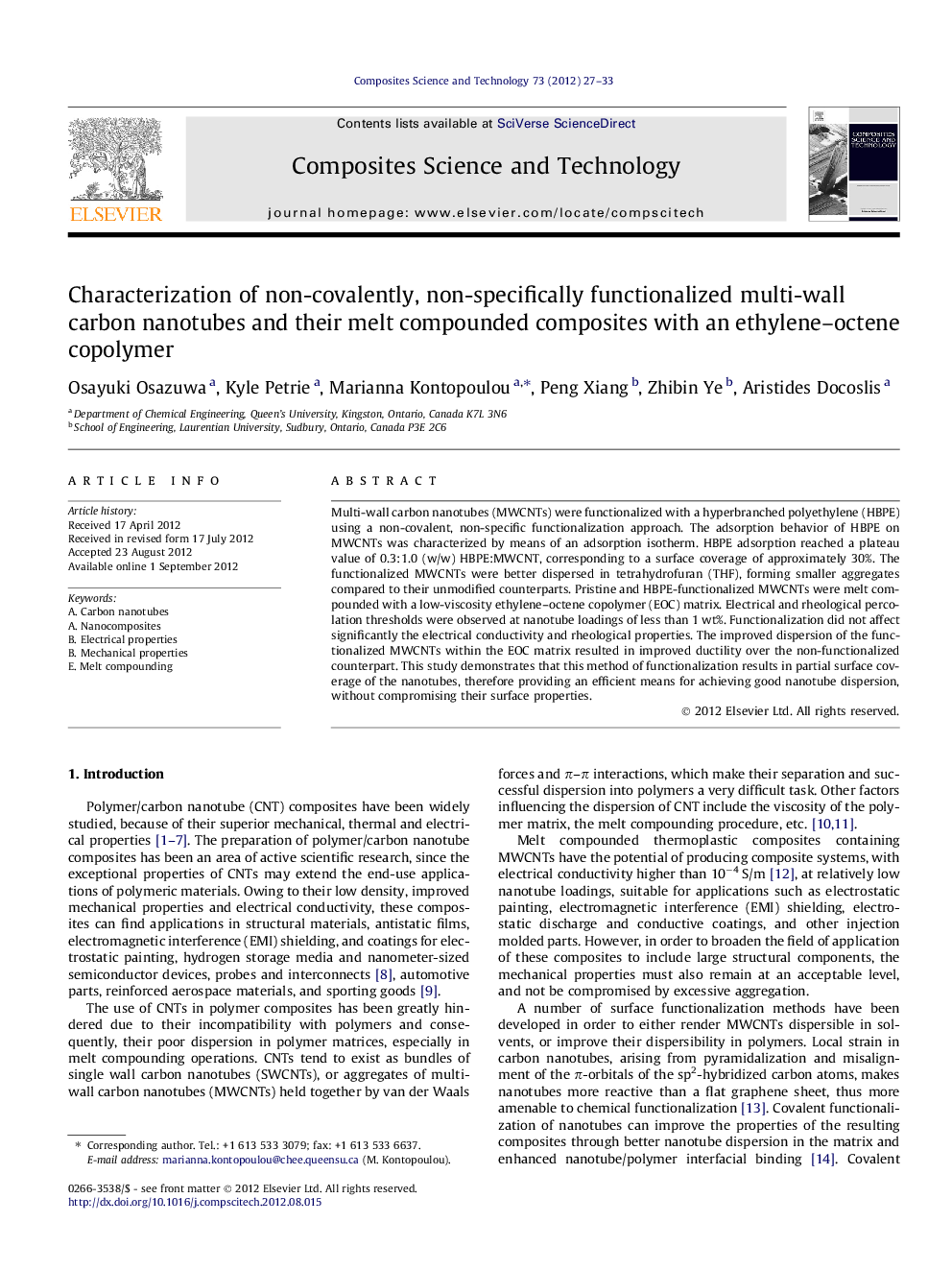| Article ID | Journal | Published Year | Pages | File Type |
|---|---|---|---|---|
| 820598 | Composites Science and Technology | 2012 | 7 Pages |
Multi-wall carbon nanotubes (MWCNTs) were functionalized with a hyperbranched polyethylene (HBPE) using a non-covalent, non-specific functionalization approach. The adsorption behavior of HBPE on MWCNTs was characterized by means of an adsorption isotherm. HBPE adsorption reached a plateau value of 0.3:1.0 (w/w) HBPE:MWCNT, corresponding to a surface coverage of approximately 30%. The functionalized MWCNTs were better dispersed in tetrahydrofuran (THF), forming smaller aggregates compared to their unmodified counterparts. Pristine and HBPE-functionalized MWCNTs were melt compounded with a low-viscosity ethylene–octene copolymer (EOC) matrix. Electrical and rheological percolation thresholds were observed at nanotube loadings of less than 1 wt%. Functionalization did not affect significantly the electrical conductivity and rheological properties. The improved dispersion of the functionalized MWCNTs within the EOC matrix resulted in improved ductility over the non-functionalized counterpart. This study demonstrates that this method of functionalization results in partial surface coverage of the nanotubes, therefore providing an efficient means for achieving good nanotube dispersion, without compromising their surface properties.
